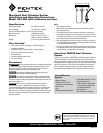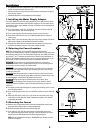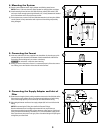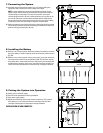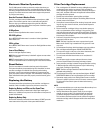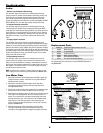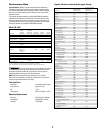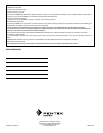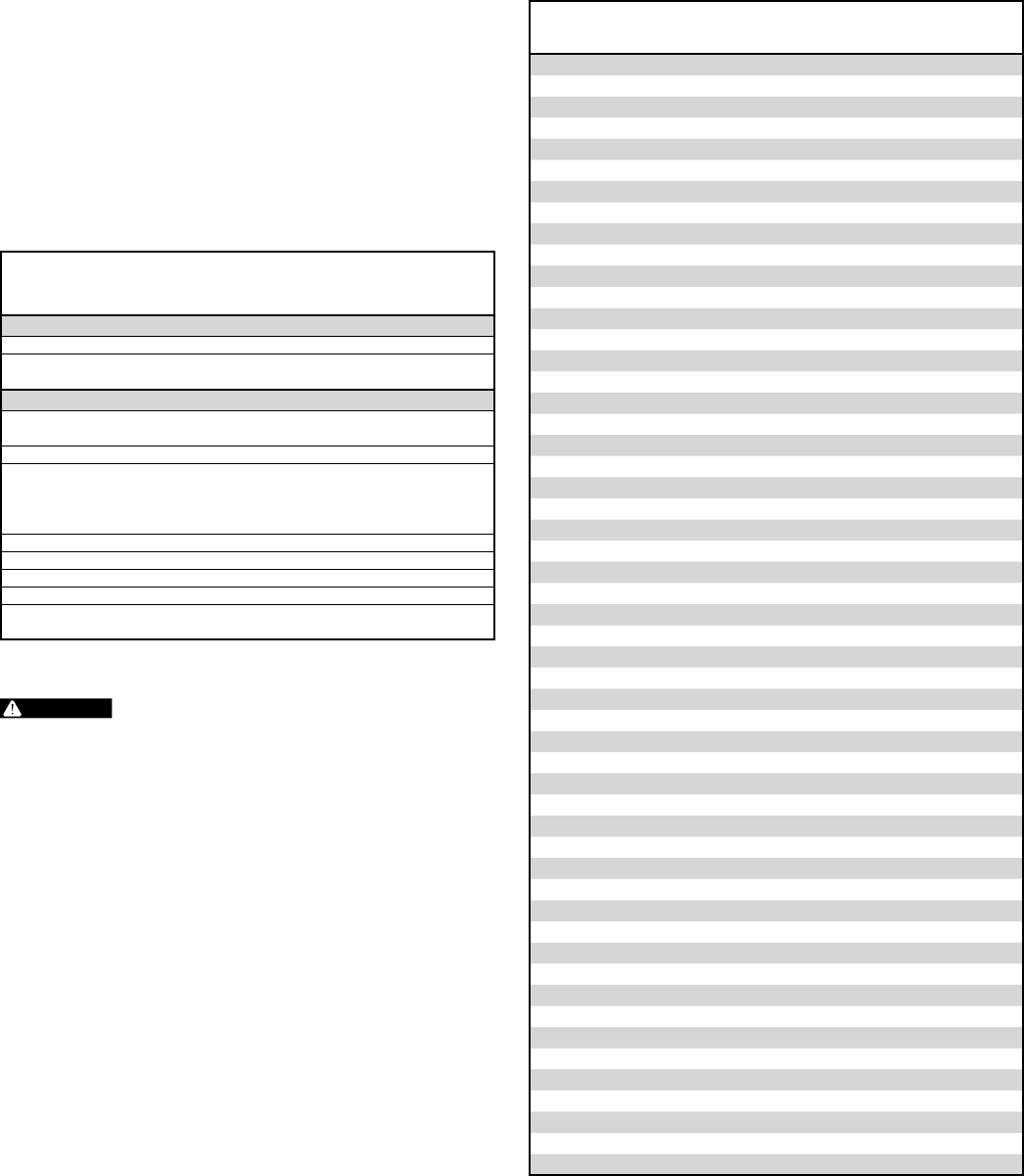
Performance Data
Important Notice: Read this performance data and compare the
capabilities of this system with your actual water treatment needs.
It is recommended that, before installing a water treatment system,
you have your water supply tested to determine your actual water
treatment needs.
This system has been tested according to NSF/ANSI 42 and 53 for
reduction of the substances listed below. The concentration of the
indicated substances in water entering the system was reduced to
a concentration less than or equal to the permissible limit for water
leaving the system, as specified in NSF/ANSI 42 and 53.
Model US-1500
Substance
Influent
Challenge
Concentration
Maximum
Permissible
Product Water
Concentration
Reduction
Requirements
Minimum
Reduction
Average
Reduction
Standard 42
Chlorine Taste & Odor 2.0 mg/L ± 10% ≥50% 97%
Particulates
(0.5–<1µ) - Class I
at least 10,000
particles/mL
≥85% 96%
Standard 53
Cysts
Minimum
50,000/L
99.95% 99.99% 99.99%
Turbidity 11 mg/L ± 1 NTU 0.5 NTU 95.4% 97.4%
Asbestos
10
7
to 10
8
fibers/L > 10
micrometers in
length
99% 99.9% 99.9%
Lead (pH 6.5) 0.15 mg/L ± 10% 0.010 mg/L 99.3% 99.3%
Lead (pH 8.5) 0.15 mg/L ± 10% 0.010 mg/L 94.1% 97.6%
Mercury (pH 6.5) 0.006 mg/L ± 10% 0.002 mg/L 72% 88.5%
Mercury (pH 8.5) 0.006 mg/L ± 10% 0.002 mg/L 95% 96.7%
Chloroform (VOC
surrogate chemical)
0.300 mg/L ±
10%
0.015 mg/L 99.7% 99.8%
Flow Rate=0.6 gpm (2.27 L/min); Capacity=1000 gallons (3785 L) or 12 months
Testing was performed under standard laboratory conditions, actual performance may vary.
WARNING:
Do not use with water that is microbiologically unsafe
or of unknown quality without adequate disinfection before or after
the system. Systems certified for cyst reduction may be used on
disinfected waters that may contain filterable cysts.
NOTE: Substances reduced are not necessarily in your water.
Filter must be maintained according to manufacturer’s instructions,
including replacement of filter cartridges.
Test Conditions
Flow Rate = as noted for filter system
Inlet Pressure = 60 psi (4.1 bar)
pH = 7.5±1
Temperature = 68°F ± 5°F (20°C ± 2.5°C)
Operating Requirements
Pressure = 30-125 psi (2.1–8.62 bar)
Temperature = 40-100°F (4.4–37.8°C)
Turbidity = 5 NTU Max.
Organic Chemicals Included by Surrogate Testing:
Substance
Influent Challenge
Concentration mg/L
Maximum permissible
product water
concentration mg/L
alachor 0.050 0.001
atrazine 0.100 0.003
benzene 0.081 0.001
carbofuran 0.190 0.001
carbon tetrachloride 0.078 0.0018
chlorobenzene 0.077 0.001
chloropicrin 0.015 0.0002
2,4-D 0.110 0.0017
dibromochloropropane (DBCP) 0.052 0.00002
o-dichlorobenzene 0.080 0.001
p-dichlorobenzene 0.040 0.001
1,2-dichloroethane 0.088 0.0048
1,1-dichloroethylene 0.083 0.001
cis-1,2-dichloroethylene 0.170 0.0005
trans-1,2-dichloroethylene 0.086 0.001
1,2-dichloropropane 0.080 0.001
cis-1,3-dichloropropylene 0.079 0.001
dinoseb 0.170 0.0002
endrin 0.053 0.00059
ethylbenzene 0.088 0.001
ethylene dibromide (EDB) 0.044 0.00002
haloacetonitriles (HAN):
bromochloroacetonitrile 0.022 0.0005
dibromoacetonitrile 0.024 0.0006
dichloroacetonitrile 0.0096 0.0002
trichloracetonitrile 0.015 0.0003
haloketones (HK):
1,1-dichloro-2-propanone 0.0072 0.0001
1,1,1-trichloro-2-propanone 0.0082 0.0003
heptachlor 0.25 0.00001
heptachlor epoxide 0.0107 0.0002
hexachlorobutadiene 0.044 0.001
hexachlorocyclopentadiene 0.060 0.000002
lindane 0.055 0.00001
methoxychlor 0.050 0.0001
pentachlorophenol 0.096 0.001
simazine 0.120 0.004
styrene 0.150 0.0005
1,1,2,2,-tetrachloroethane 0.081 0.001
tetrachloroethylene 0.081 0.001
toluene 0.078 0.001
2,4,5-TP (silvex) 0.270 0.0016
tribromoacetic acid 0.042 0.001
1,2,4-trichlorobenzene 0.160 0.0005
1,1,1-trichloroethane 0.084 0.0046
1,1,2-trichloroethane 0.150 0.0005
trichloroethylene 0.180 0.0010
trihalomethanes (includes):
chloroform (surrogate chemical)
bromoform 0.300 0.015
bromodichloromethane
chlorodibromomethane
xylenes (total) 0.070 0.001
7



